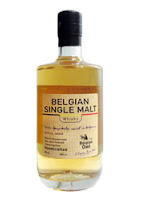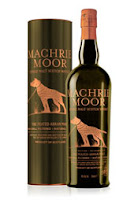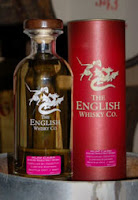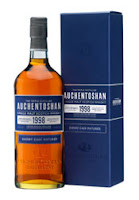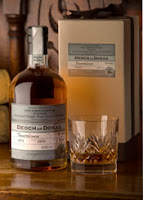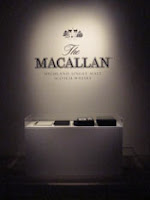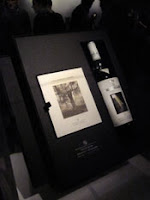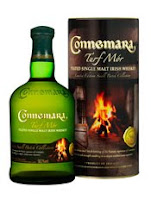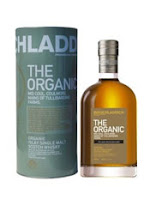
2010 has seen many new whiskies released on to the market. We have sampled and reviewed a number of these over the last year at Whisky For Everyone, so we have decided to choose our top 10 favourites of these new releases. A similar Top 10 that we published this time last year has proved to be one of our most popular ever and we hope that this one is enjoyed as much. Please let us know what you think of our choices by leaving a comment at the bottom of this post.
Such Top 10s are always subjective and therefore contentious as a result - everyone has differing opinions at the end of the day. We have tried to select our Top 10 on a ratio of quality, value for money and availability to the public. To this end, there are not really any single cask or independent bottlings included, despite some excellent ones being sampled throughout the year. However, some are limited edition bottlings that are still available to purchase.
We have split our Top 10 in to two parts – to read the first part, released last week and containing numbers 6-10,
click here. Numbers 1-5 and our ‘Whisky of the Year’ can be found below. So, drum roll please! Our top five is …
 WHISKY FOR EVERYONE
WHISKY FOR EVERYONE
WHISKY OF THE YEAR 2010
1 > Bowmore TempestThe
Tempest is a small batch bottling that is released approximately twice a year – Batch 1 (of which our sample is from) was released in early 2010, with Batch 2 coming in mid 2010 and the next batch penciled in for release in early 2011. This was matured in specially selected first fill ex-bourbon casks and is bottled at 10 years of age. The nose is a wonderful combination of sweet and smoky aromas - caramel, butterscotch, marshmallow, malty cereals, dark dried fruit and damp, earthy moss. The palate feels creamy and rich with sweet butterscotch, vanilla, toffee, honey, tangy citrus, mossy smoke, wood spice and a hint of salt. The finish is very long and smoky, with bitter iodine adding further complexity to the many other notes. This is an exceptional whisky that offers incredible complexity and balance. It was our unanimous choice as our favourite whisky of 2010. We can’t wait to try the forthcoming version of the
Tempest!
Click here to read our original post about Bowmore
Tempest.
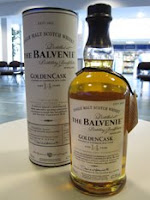 2 > Balvenie 14 years old Golden Cask
2 > Balvenie 14 years old Golden CaskThe whisky is bottled at 14 years of age and has been part matured in Caribbean rum casks, hence the name
Golden Cask. It was released last February and is one of Balvenie’s exclusive Duty Free/travel retail bottlings. The nose is fresh, perfumed and vibrant with plenty of captivating aromas - the combination is excellent and tempting, making you want to just sit and sniff the whisky forever. The palate is fresh, juicy, sweet and intense. There is vanilla, oak, cereal grains, sweet honey, orange zest, sandalwood, nutmeg and crumbly brown sugar. The finish is again intense and begins sweetly before becoming much drier and spicier. This is a delicious whisky and one that mixes its more obvious sweeter notes with the understated subtle ones. Great value for money – grab a bottle next time you go through an airport.
Click here for our original post about Balvenie
Golden Cask.
 3 > Laphroaig Triple Wood
3 > Laphroaig Triple WoodAnother Duty Free/travel retail exclusive whisky.
Triple Wood has been matured in three different types of cask - ex-bourbon cask, then quarter cask and then ex-Oloroso sherry casks. The whisky is only produced in small batches, the latest of which was released last Summer. The nose is expressive with intense earthy peat and bitter iodine, before these mellow to allow other notes through to create an intense combination - caramel, raisins, prunes, honey, vanilla and oatcakes. The palate is softer than expected. Rich peat smoke mixes with caramel, almonds, honey, dried fruit, brine and bitter iodine. The finish is long, with peat smoke burning away for ages. This Laphroaig is a lovely dram and a very good example of a peaty, smoky whisky. A wonderfully crafted, expressive and complex dram.
Click here for our original post about Laphroaig
Triple Wood.
 4 > Double Single by Compass Box
4 > Double Single by Compass BoxThis bottling was released as part of the Compass Box 10th anniversary celebrations. It is made from just one cask of single malt and one cask of grain whisky and is a limited edition of just 876 bottles. The nose is fresh, vibrant and very promising with a complex combination of aromas - vanilla, green apple, nuts, oak, fresh coconut, dried grass, cereals and kiwi fruit. The palate is delicious, juicy, tangy and fresh with many of those notes from the nose present. The finish is short and vibrant with sweet vanilla and honey notes. This is a cracking whisky. It offers an insight in to how good and complex a lighter whisky can be if sympathetically matured and blended.
Double Single also confirms that Compass box whiskies are all unique and of a consistently high quality.
Click here for our original post about
Double Single from Compass Box.
 5 > Bladnoch 20 years old
5 > Bladnoch 20 years oldThis whisky was released last April and has been matured in ex-bourbon casks and is the oldest Bladnoch currently available from the Lowland distillery. The nose is enticing and becomes even more so with time in the glass. It has a mix of vanilla, honey, stewed apple and cereal notes, plus zesty lemon, honeysuckle and dried grass. The palate is light, fresh and vibrant, reflecting the order of the nose. However, it is remarkably complex and packed with subtle notes. The finish is long, fresh and very enjoyable with honey and vanilla combining well with cereals and dried grass notes. This is a lovely dram. The quality of the spirit shines through, as does the sympathetic use of good ex-bourbon casks. This would be an ideal light, fresh summer dram or as an aperitif.
Click here for our original post about Bladnoch 20 years old.
In order to complete the Top 10, here are numbers 6-10 as shown in Part 1.
Click here to read the full reviews of the five whiskies.
6 > Glenfiddich 14 years old
Rich Oak7 > Arran 14 years old
8 > Balblair 2000
9 > Connemara
Turf Mór10 > Bruichladdich
Organic
 Inbox is back after its festive break and is ready to bring you more news! Inbox is a weekly round up of whisky news and PR type material that has found its way in to our email inbox. Sadly, we cannot write full articles or do justice to every piece that we receive, so Inbox has been born! It features items from around the world of whisky and is published by us each Friday. Within Inbox we will write a couple of lines about each press release/piece of news/PR event that we have received and provide links, where possible, for you to find out further information if you want to. This week seems a bit quiet as most companies have been concentrating on Burns Night events or recovering from Burns Night events! Anyway, here goes ...
Inbox is back after its festive break and is ready to bring you more news! Inbox is a weekly round up of whisky news and PR type material that has found its way in to our email inbox. Sadly, we cannot write full articles or do justice to every piece that we receive, so Inbox has been born! It features items from around the world of whisky and is published by us each Friday. Within Inbox we will write a couple of lines about each press release/piece of news/PR event that we have received and provide links, where possible, for you to find out further information if you want to. This week seems a bit quiet as most companies have been concentrating on Burns Night events or recovering from Burns Night events! Anyway, here goes ... The famous Scottish blend has undergone a small face-lift across its range, which includes the popular White Label plus a 12 and 18 years old and the Signature. The bottle shapes have remained the same but the label designs have been given a more contemporary look. Every label will now include 'brand heritage features' including a 1846 age statement - the date that Dewar's was founded - plus founder John Dewar's signature and the Royal Warrant symbol, which has been awarded to Dewar's by every reigning monarch since Queen Victoria. Dewar's senior brand manager Demetrius Giouzelis says “Dewar’s believes in making full, well-rounded whiskies that are enjoyable to drink. It is this well-rounded taste which was the inspiration for our new packaging design".
The famous Scottish blend has undergone a small face-lift across its range, which includes the popular White Label plus a 12 and 18 years old and the Signature. The bottle shapes have remained the same but the label designs have been given a more contemporary look. Every label will now include 'brand heritage features' including a 1846 age statement - the date that Dewar's was founded - plus founder John Dewar's signature and the Royal Warrant symbol, which has been awarded to Dewar's by every reigning monarch since Queen Victoria. Dewar's senior brand manager Demetrius Giouzelis says “Dewar’s believes in making full, well-rounded whiskies that are enjoyable to drink. It is this well-rounded taste which was the inspiration for our new packaging design".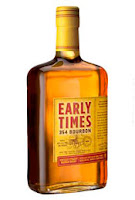 Brown Forman, the owners of the Early Times bourbon brand, have announced that they are to relaunch the famous whiskey back in to the US market for the first time since 1983. It has previously only been available in various export markets and these will be phased out over time. The bourbon's packaging (pictured, left) will pay homage to the packaging of post-Prohibition 1930s Early Times and will retail for $15-20. The launch will be backed up by information and adverts in several US trade magazines. The Early Times brand manager Joe Murray says, “the results of the taste test were what really told us we had a winner. Early Times offers a quality product, at an accessible price point, capitalizing on the growing number of consumers entering the bourbon category”.
Brown Forman, the owners of the Early Times bourbon brand, have announced that they are to relaunch the famous whiskey back in to the US market for the first time since 1983. It has previously only been available in various export markets and these will be phased out over time. The bourbon's packaging (pictured, left) will pay homage to the packaging of post-Prohibition 1930s Early Times and will retail for $15-20. The launch will be backed up by information and adverts in several US trade magazines. The Early Times brand manager Joe Murray says, “the results of the taste test were what really told us we had a winner. Early Times offers a quality product, at an accessible price point, capitalizing on the growing number of consumers entering the bourbon category”.



